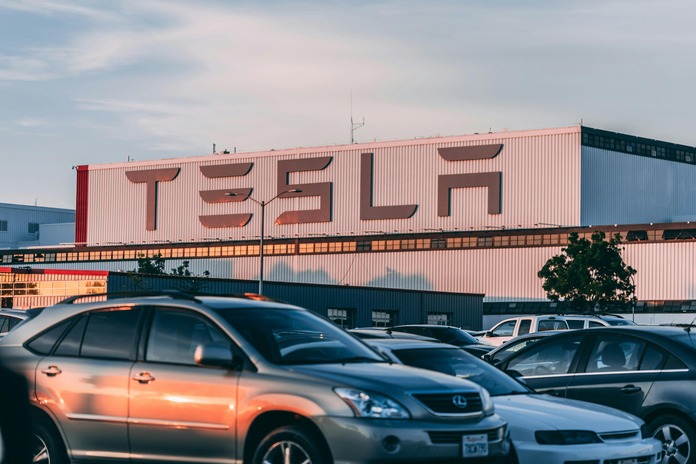Tesla Inc. (NASDAQ:TSLA) reported its third-quarter 2025 earnings with mixed results, highlighting growth in revenue and vehicle deliveries but missing earnings per share (EPS) expectations. Investors are weighing strong operational performance against the EPS shortfall and margin pressures.
Q3 Financial Highlights
Tesla posted Q3 EPS of $0.50, below the Zacks Consensus Estimate of $0.53 and down from $0.72 in the same quarter last year. Despite the EPS miss, total revenue climbed 12% year-over-year to $28.1 billion, surpassing the consensus estimate of $26.4 billion.
Automotive revenues contributed $21.2 billion, a 6% increase year-over-year, topping projections of $18.86 billion. This figure included $417 million from regulatory credit sales, which fell 43.6% compared with last year. Excluding leasing and regulatory credits, automotive sales were $20.4 billion, beating estimates thanks to higher-than-expected vehicle deliveries.
Tesla’s automotive gross profit (excluding leasing and credits) was $3 billion, with a gross margin of 14.7%, down from 16.4% in Q3 2024. The company’s operating margin dropped 501 basis points to 5.8%, but still exceeded the 4.9% estimate.
Vehicle Deliveries and Production
Tesla delivered 497,099 vehicles, up 7% year-over-year, surpassing the estimated 435,370 units. The Model 3/Y line saw 481,166 deliveries, a 9% increase from last year and well above expectations of 416,456 units.
Production totaled 447,450 units — 435,826 Model 3/Y and 11,634 other models — representing a 5% decline from the prior year and slightly below the forecast of 451,948 units. Despite production challenges, Tesla’s delivery figures underscored strong consumer demand and effective logistics.
Energy Generation and Storage Performance
Tesla’s Energy Generation and Storage segment recorded revenues of $3.4 billion, up 44% year-over-year, surpassing the $2.9 billion estimate. Energy storage deployments reached 12.5 GWh, reflecting robust growth in Tesla’s renewable energy solutions.
Services and Other revenues rose 25% year-over-year to $3.5 billion, above the $3.35 billion consensus. Tesla continues to expand its Supercharger network, ending Q3 2025 with 73,817 connectors, supporting both current and future electric vehicle adoption.
Cash Flow and Financial Position
Tesla maintained a strong balance sheet with $41.6 billion in cash and equivalents, up from $36.6 billion at the end of 2024. Long-term debt rose slightly to $5.78 billion.
The company generated $6.24 billion in net cash from operations, nearly matching last year’s $6.26 billion. Capital expenditures totaled $2.25 billion, while free cash flow reached $4 billion, a significant increase from $2.7 billion in Q3 2024, giving Tesla flexibility for growth initiatives and technological investments.
Investor Takeaways
While Tesla Q3 2025 earnings disappointed on the EPS front, the quarter demonstrates resilience in vehicle deliveries, automotive revenue, and energy storage expansion. The record deliveries of Model 3/Y and growth in renewable energy solutions highlight Tesla’s diversified growth strategy beyond car sales.
Investors should note that the EPS miss was partly influenced by lower regulatory credit sales and margin pressures, rather than a drop in demand or core operations. Tesla’s ongoing focus on energy storage, Supercharger expansion, and continued innovation in automotive and sustainable technologies positions the company for long-term growth.
Moreover, Tesla is actively investing in new production capacity and advancing AI-driven autonomous driving features, which could significantly enhance future margins and revenue streams. With global EV adoption accelerating and energy solutions in high demand, Tesla’s long-term growth potential remains compelling. Analysts and investors may see the Q3 dip as a strategic entry point to gain exposure to a company leading both electric vehicle innovation and renewable energy expansion.
Tesla’s commitment to innovation and diversification, along with a strong balance sheet, suggests the company is well-positioned to weather short-term volatility while continuing to capture opportunities in the rapidly growing EV and energy markets. Long-term investors may find this an ideal moment to strengthen their positions in NASDAQ:TSLA.
Featured Image: Pexels © Craig Adderley









